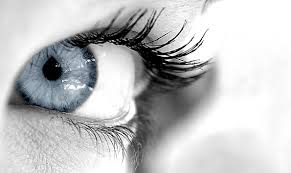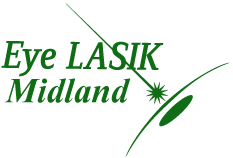
by EyeLASIK | Jun 9, 2016 | Eye LASIK, Procedure

Just remember to relax…a lot!
Simply put, LASIK eye surgery is life changing. The procedure is now one of the safest vision correction procedures you can have. It’s no wonder millions of people have chosen to have LASIK. Although the surgery is a simple procedure, there is still a recovery period. However, recovery after LASIK is usually quick and is relatively pain free! Although you may have discomfort for a day or two after the procedure, there is less recovery time than many other same day procedures. Here’s our list of things you can do to ensure that you have a successful LASIK recovery!
Get Your ZZZ’s
After your procedure, go home and take a nap. Allow your eyes to rest. Although LASIK is a safe and simple procedure, your eyes will still need time to recover. The best way to promote healing is to keep them closed. Most patients experience some irritation once the topical anesthetic wears off. By keeping your eyes closed, you can minimize this irritation.
Protective Eyewear Is Important To A Successful LASIK Recovery
You’ll be given safety glasses or goggles to wear after your procedure. Anytime you are outside to prevent any dirt or debris from getting into your eyes, especially during the first 24 to 48 hours during your LASIK recovery, you should wear these. Wearing your protective eyewear anytime you sleep for the first week after the procedure will help prevent you from accidentally hitting or rubbing your eyes during your sleep.
Avoid The Rub
Rubbing your eyes during your LASIK recovery period can cause complications. It can cause the flap created during the procedure to become irritated. That can lead to blurry vision and possibly the need for more surgery. This is another great reason to take a nap after your procedure. Sleeping will keep you from feeling the need to rub your eyes while you’re asleep.
One Drop At A Time
You’ll be given a prescription for eye drops to use post-operatively. It’s important to use them as prescribed by your ophthalmologist during your LASIK recovery. These drops will most likely include an antibiotic, a steroid, and possibly an anti-inflammatory medication to prevent infection and swelling. It also helps alleviate some of the irritation you may feel shortly after the procedure. If you have any questions on how to use your drops, ask your physician before you leave the surgery center.
Use Artificial Tears During Recovery
In addition to prescription drops, you will receive drops in your LASIK kit that can be used to moisturize your eyes. Use them! Artificial tears will help with the discomfort following your LASIK procedure. They also keep your corneas hydrated, which will allow them to heal quickly and properly. These drops can be used as often as needed. If you will be using them at the same time as your prescription drops, use the tears first and then wait five minutes before instilling the prescribed drops.
Using these five tips will help to ensure a smooth LASIK recovery and help alleviate any discomfort. If you have any questions, be sure to check with your surgeon or one of our great staff members if you have any additions questions or need more recommendations!

by EyeLASIK | Feb 1, 2016 | Procedure

Resting after the procedure is important.
Congratulations! If you’re reading this, it means you’ve already read Part 1 and Part 2 of our blog on what to expect from LASIK. Today, we’re focusing on what will happen after your procedure.
Don’t LASIK And Drive
As we’ve stated before, a responsible adult should be available to drive you to and from your surgical appointment. Your vision will be hazy and your eyes do not need to strain excessively. Therefore, driving is considered extremely hazardous.
All You Have To Do Is Relax
Once you get home, all you need to do is sleep. Plan on resting for 3-4 hours with your eyes closed to prevent squinting and straining. You can expect to have blurry vision for approximately the first 24 hours. Other patients have reported halos, light sensitivity, dry eye feeling, and the general feeling of discomfort. The majority of the irritation will occur a few hours post-op and subside after a few hours.
You will be prescribed special eye drops that contain an antibiotic and a moisturizing agent in them; we recommend using these per the doctor’s instructions to prevent discomfort. You can also take over-the-counter acetaminophen, ibuprofen, or aspirin to ease any pain, as well.
Add It To Your Calendar
Your surgeon will set up a post-operative visit with you 24-48 hours after your procedure. Be sure to bring all of your prescriptions with you to this appointment. Don’t be alarmed at the redness or discomfort following surgery. This is completely normal, but be sure to keep note of any changes or anything unusual.
Other Things To Consider
- Avoid driving until you’re 100% confident in your vision (this various from patient to patient).
- DO NOT RUB YOUR EYES! This causes irritation and can introduce bacteria into the surgical site, which could cause further damage and prevent proper healing.
- No cosmetics or lotions for 7-14 days after the procedure.
- Wear sunglasses to prevent additional light sensitivity.
- Avoid situations with lots of dirt or dust (easier said than done in West Texas!).
- No swimming, hot tubs, or other situations where water could get into your eye (especially chlorinated water) for 3-6 weeks. Exercise caution when showering or bathing as to not to get soap or water in your eyes.
- Limit exercise and contact sports that could cause eye strain or injury for 7-14 days.
- Use your drops!
- Reading, watching television, and working on devices is acceptable as long as you take frequent breaks.
- Watch out for small creatures, both the two-legged and four-legged varieties! They can accidentally hit your eyes.
Eye LASIK encourages you to call if you have any questions regarding your post-operative care. We are so excited to have finished our blog series on what to expect from LASIK. Now that we’re done, the only thing we’re lacking is…YOU! We offer complementary consultations and we’re excited to meet you soon!

by EyeLASIK | Jan 18, 2016 | Procedure

Day-of tips & tricks!
We’re back with the second part of our three-blog series on what to expect from LASIK. Before continuing on, we recommend that you read Part 1, Before Your Procedure. However, today is all about the big event…the day of your LASIK procedure!
Are You Ready?
We highly recommend that you complete all of your paperwork prior to coming in. However, if you missed something, be sure to bring it so we can get everything finalized before your surgery. There are several things to keep in mind on the day of your appointment prior to the procedure:
- Wear comfortable clothing
- Do not wear any makeup or cosmetics, including lotion
- Eat a light meal beforehand
- Make certain a responsible adult comes with you to drive you home after we’re done and to help care for you for the first day or so
But First, A Little Preparation
Before the procedure starts, you’ll have another chance to ask your surgeon or one of the nurses any questions you may have. When you’re ready, we will have you lay down comfortably. At this time, your eyes will be cleaned and then prepped with numbing drops. They will cause your eyes to feel a little odd, but the sensation is similar to dilation or a glaucoma test.
Once the drops have properly numbed your eyes, one eye will be covered and the nurse or surgeon will place you under the laser. Your eye will be held open by a device so you won’t even need to worry about blinking during your procedure. At this point, the doctor will be ready to start on the first eye.
It’s Go Time!
Once you are properly placed under the laser, you will be asked to stare at a fixed light. Keep in mind this is NOT the actual laser. It is simply a tool used to help you focus on a fixed spot. When the laser starts, you will hear clicking or buzzing…but don’t worry. This is completely normal. It’s just the machine starting up. You may feel some pressure but this, too, is normal. The surgeon will keep you advised and instruct you during the procedure. Once the doctor has completed the first eye, he will move on to the next. The entire procedure only takes around half an hour!
Be sure to join us again for the third and final part of our blog series on what to expect from LASIK. We will be going over post-operation instructions and a timeline on when you can expect to get back to your daily routine.

by EyeLASIK | Jan 4, 2016 | Procedure

A thorough exam is critical before LASIK.
LASIK has come a long way since its origination. The technology is becoming more and more precise and there have been consistent improvements to techniques and procedures. However, part of the process should be making sure that the patient to be prepared, too. Our blog today will focus on what to expect from LASIK before your procedure.
The Consultation
Meeting with your doctors and their team ahead of time is critical. This is used as an opportunity for your surgeon to complete a very thorough eye examination. Part of this exam is to measure the shape of your cornea and essentially “map” the exact landscape of your eye. Since each patient is unique, the machines must be calibrated to the exact shape of your cornea. The best part about a consultation from Eye LASIK is that it’s FREE!
An additional part of the consultation is the meeting with our office staff to determine payment arrangements. As we’ve previously discussed in other blogs, Eye LASIK offers affordable financing and the procedure is allowed under most HSA insurance plans. We want everyone to be able to see clearer than clear…it’s more affordable than you might think.
Plan Ahead
One of the most important things to do prior to your procedure (and preferably before your consultation) is to stop wearing your contacts. Contact lenses can manipulate the contours of your eye’s surface, so it’s important to get the exact “no bells or whistles” shape prior to your procedure. It’s a bit inconvenient but be sure to plan on wearing your eyeglasses for at least two weeks prior to your surgery date.
It’s Go Time!
On the day of your procedure, be sure to make arrangements to have someone available to drive you to and from your appointment. Your vision will be blurry for a while afterwards and some of the medications given to you can make you groggy, impairing your ability to drive. It’s just safer this way.
Also, be sure to avoid wearing makeup (especially eye makeup), lotions, creams, or other cosmetics. These particles of these products have been known to cause infections in some patients, though this is usually just a precautionary measure. We simply recommend going without it for the day.
Eye LASIK will have two more installments of the “what to expect” series, including the actual procedure and the post-operative care, which will be posted in the upcoming weeks.







